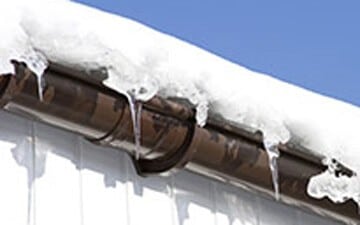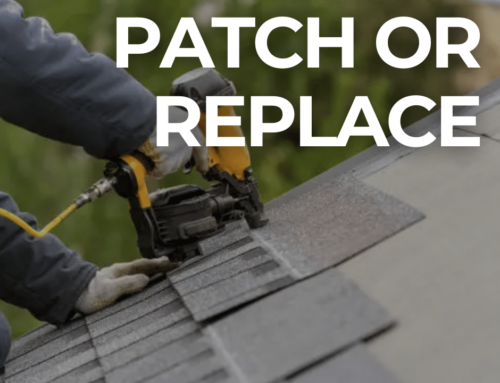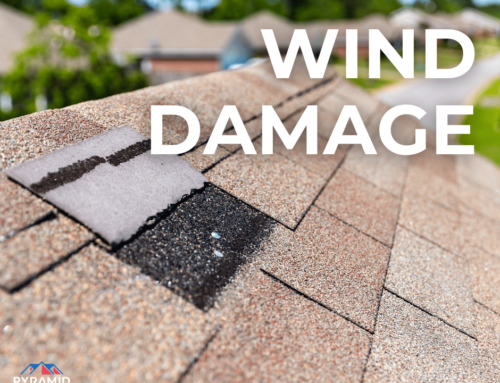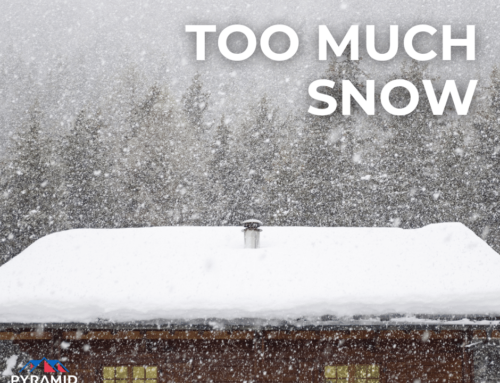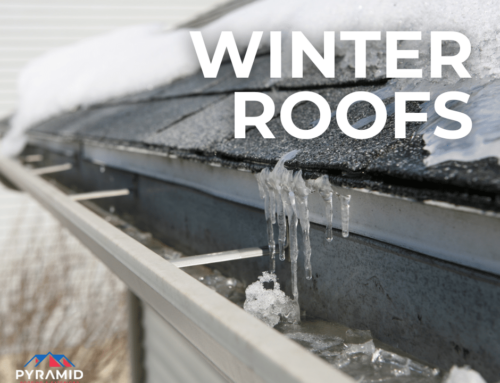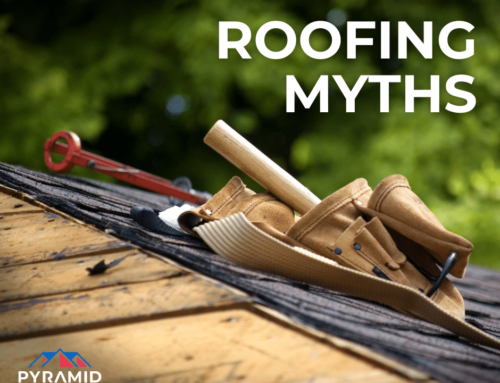Winter is just around the corner in Kansas City. We’ve already experienced the lowest temperatures of the season. It won’t be long before the snow arrives too. We all know snow and ice on sidewalks and driveways can be hazardous, but many people don’t realize that snow and ice can also be hazardous to your roof. A light, fluffy snow can add as much as 20 lbs. of weight per cubic foot to your roof. If the snow is wet or includes ice or refrozen snow, the weight can increase to as much as 60 lbs. of weight per cubic foot. Excessive snow on your roof can also lead to the formation of ice dams. To prevent damage to your roof, you need to know when and how to remove snow from your roof.
Residential roofs are required by building codes to be able to support the heaviest snows found in that particular area of the country. This means, in most situations, your roof can support more than the average amount of snow and ice Mother Nature typically dishes out. But if there’s an unusually heavy or wet snow or ice, it could cause damage. The amount of snow is not as dangerous as the weight of the snow. Wet snow is much heavier than dry snow. Six inches of wet snow is equal to the weight of 38 inches of dry snow.
How can you tell if the snow currently on your roof is too heavy? Check the interior doors on upper floor bedrooms and closets in the center of your home. If they stick, it could indicate that the weight on the center structure of your home is distorting your door frame. Also, look for cracks in the drywall around the door frames. A good rule of thumb is to consider snow removal if you have 6 or more inches of snow on your roof and you have had problems with ice dams in the past. If you have never had an ice dam before, you can wait until you have about a foot of snow accumulated on your roof.
Never attempt to get onto your roof yourself. Even in good weather, climbing a ladder and stepping onto your roof is dangerous. Adding snow and ice to the situation is a recipe for disaster. Your best course of action is to call a professional snow removal contractor. Professional crews use special gear, including safety harnesses and snow and ice-removal tools, to remove the excess snow. It’s important to know that they will not remove all of the snow from your roof. Trying to remove the bottom layer of snow is likely to result in damage to your roofing materials. Instead, they will remove the bulk of the snow to reduce the weight. Be sure to select a snow removal contractor who is licensed and insured.
If you live in a home where the roof is relatively close to the ground, you may be able to tackle the situation yourself without leaving the ground. Many home improvement stores sell long-handled snow rakes that work well for removing snow. These rakes have telescoping handles that can extend to about 20-feet long. While effective, snow rakes can be dangerous to use. Falling snow can damage shrubs below or drop snow right onto you. It’s also possible to knock icicles loose that can fall and cause injuries or damage. You need to be careful not to accidentally hook the edge of a piece of flashing or a loose shingle, which could cause more damage than the snow. Look for a model that has a built-in roller, which will keep the blade safely above the shingles. Again, don’t try to remove all of the snow, but focus on removing enough to reduce the excessive weight.

